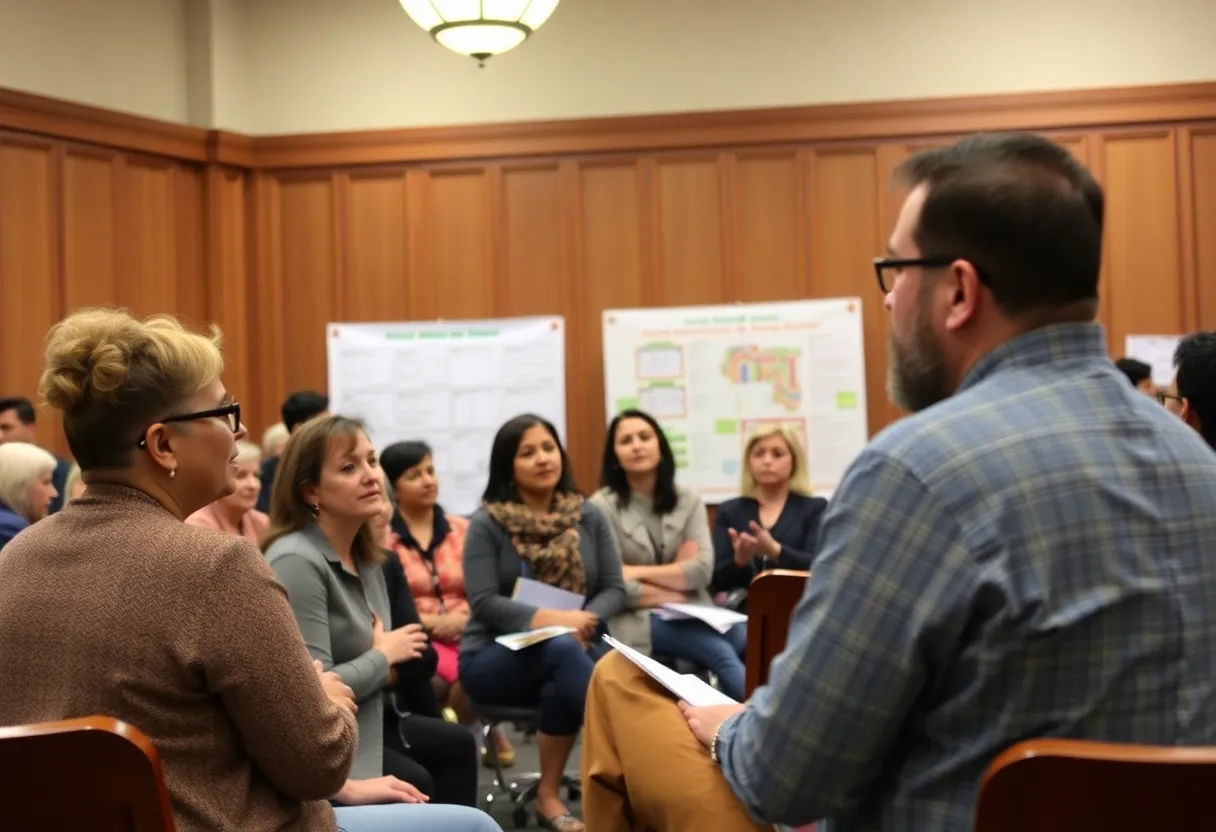

Community members gather to collaborate on plans addressing the impact of the homeless shelter closure.
Want to target the right audience? Sponsor our site and choose your specific industry to connect with a relevant audience.
Prominent brand mentions across targeted, industry-focused articles
High-visibility placements that speak directly to an engaged local audience
Guaranteed coverage that maximizes exposure and reinforces your brand presence
Interested in seeing what sponsored content looks like on our platform?
May’s Roofing & Contracting
Forwal Construction
NSC Clips
Real Internet Sales
Suited
Florida4Golf
Click the button below to sponsor our articles:
Sponsor Our ArticlesThe Johnson Street homeless shelter is set to close in August due to expiring federal funding, prompting discussions about ongoing support for the homeless. With a capacity to house up to 160 individuals, funding cuts challenge the Poverello Center’s operations, and the city aims to raise $400,000 to help affected residents find permanent housing. City officials are coordinating with service providers to create supportive pathways, addressing community concerns about safety and property values while emphasizing the importance of assistance efforts.
As summer approaches, a significant decision is set to take place regarding the Johnson Street homeless shelter. This facility, which has been a refuge for many, is slated to close in August due to the expiration of federal funding that has supported operations throughout the pandemic. This news has stirred up conversations within the community about the future of ongoing support for those facing homelessness.
The Poverello Center has been operating the Johnson Street shelter, which can accommodate 150 to 160 residents each night. However, recent funding cuts have made it increasingly difficult for the center to provide comprehensive services, including one-on-one case management for all individuals in need. The West Broadway location, another facility run by the Poverello Center, has limited capacity, housing only 20 to 30 additional people.
In response to these funding issues, the city is stepping in with a goal of raising $400,000 to aide those affected by the shelter’s closure. This initiative, termed a “housing sprint,” is designed to help current shelter residents secure permanent housing. While financial support is vital, city leaders and local housing providers stress that the human element—building personal connections and providing encouragement—is equally important for individuals navigating the challenging housing landscape.
Recognizing the hurdles that come with shelter closures, city officials are working to coordinate efforts with service providers and the Housing Advocates Network. This is geared towards helping residents with their housing searches and navigating the often confusing rental application process. Though it may not be feasible to find housing solutions for all shelter residents right away, the ultimate aim is to establish pathways that create a supportive environment for everyone.
The decision to close the Johnson Street shelter was announced back in early March, with a gradual reduction in capacity planned to begin in April. This phased approach means reducing the number of shelter residents by 30 each month. Past data shows that the Poverello Center has seen variable success in helping individuals transition to stable housing, with numbers fluctuating from 20 exits in September to dropping to just 6 in December. Seasonal factors, especially during the holidays, may contribute to these numbers.
Finding permanent housing is not simply a matter of available funding; there are various complicating factors. High rental prices coupled with individual barriers—like criminal records or mental health challenges—further complicate HUD housing searches. Local organizations, such as the YWCA Missoula’s Meadowlark shelter and Family Promise, are also stepping up to address family housing challenges by providing case management and support specifically for those fleeing domestic violence.
Concerns from community residents about the shelter’s impact on property values and safety are surfacing, prompting discussions about the need for improved outreach and accountability from city officials. In addition to the funding struggle, Mayor Andrea Davis and her team are actively exploring new potential sites to transition shelter residents, though they acknowledge that this road may be filled with obstacles.
As the closure date approaches, the reality of the situation is beginning to set in, not just for those directly affected but for the entire community. With local shelters like those in Butte bracing for expected increases in homeless individuals as a result of Missoula’s shelter closure, the regional implications of these funding cuts are becoming increasingly clear. The city, along with its partners, is committed to developing a forward-looking strategy that includes “right-sizing” shelter services and amplifying support systems to avoid homelessness.
The journey ahead may be filled with uncertainties, but with community collaboration and creative problem-solving, there’s hope for finding lasting housing solutions that work for everyone involved.
Step-by-Step Guide to a DIY Kitchen Remodel: Save Money and Stay on Trend Embarking on…
News Summary The National Patients’ Convention organized by Mission Arthritis India (MAI) focused on the…
News Summary Oluwatosin Adesoye reflects on her impactful two-year journey as a columnist focused on…
News Summary Ubie, the global healthcare AI platform, has doubled its user base to 4…
News Summary Healthcare startup Solace has achieved an over $300 million valuation after a successful…
News Summary The Japanese government has postponed planned increases to out-of-pocket medical expenses originally set…